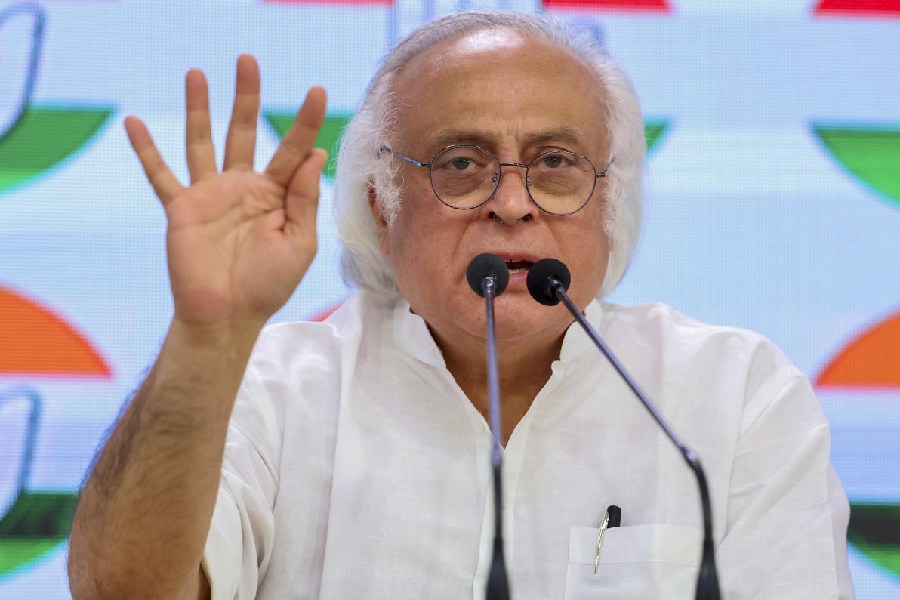Pakistan’s budgetary allocation of Rs 2,122 billion for defence for 2024-25 constitutes just 1.7 per cent of the cash-strapped but nuclear-armed nation's GDP, which is the same as the previous year, despite the higher than the Rs 1,804 billion set aside during the outgoing fiscal 2023-24, according to budget documents.
Finance Minister Muhammad Aurangzeb on Wednesday presented a Rs 18,877 billion heavily taxed budget for 2024-25.
The finance minister’s speech and various budget documents show that Rs 2,122 billion allocated for the next fiscal year is Rs 318 billion higher than Rs 1,804 billion budgeted for the outgoing fiscal year 2023-24, ending on June 30.
According to the Pakistan Economic Survey 2023-24, which is a key document showing the budget and performance of the economy each year and is released ahead of the budget each year, defence spending as a percentage of the GDP has come down since 2020.
It shows that the defence spending was 2.6 per cent of the GDP in 2020 but it decreased to 2.4 per cent in 2021, and went down further to 2.1 per cent in 2022, followed by 1.9 per cent in 2023 and 1.7 per cent in 2024. For the year 2025, defence spending has been retained at 1.7 per cent of the GDP, showing that there was no change in the share of the army in the overall pie despite it getting more money in the budget.
The document lists defence spending as per GDP since 2016 when it was 2.3 per cent, and increased to 2.5 per cent of the GDP in 2017 and further to 2.6 per cent in 2018. It remained unchanged at 2.6 per cent from 2018 to 2020 and then decreased. However, the data released by the government may not convey the real picture of defence spending as several military-related expenses are budgeted in the civilian expenditures.
For example, a sum of Pakistani Rs 662 billion, allocated for retired military personnel, which equals to about 31 per cent of the allocation for the armed forces, will not be drawn from the defence budget but rather from the government’s current expenditure.
Similarly, it is believed that key military acquisitions or funding for nuclear weapons and missile programmes are believed to be financed through separate channels, obscuring the exact military spending.
However, the budget document provides some details about the latest allocation, showing that the share of the three services and inter-services organisations has remained fairly consistent since 2019, with the Army getting 47.5 per cent, the Air Force 21.3 per cent, the Navy 10.8 per cent and the inter-services organisations 20.3 per cent of the budget.
It shows that this year the Army, Pakistan Air Force, Pakistan Navy and inter-services organisations will receive an equal percentage increase of 22.3 per cent in their respective allocations, a rare display of parity in funding distribution.
The allocation is divided into four categories: ‘Employees Related Expenses’, covering salaries and allowances for servicemen; ‘Operating Expenses’, which include costs for transportation, fuel, rations, medical treatment, training, and other essential services; ‘Physical Assets’, which funds the procurement of arms, ammunition, and related equipment through local purchases and imports; and ‘Civil Works’ dedicated to maintaining existing infrastructure and financing new construction projects.
The civil works category got the biggest 25 per cent increase with Rs 244.8 billion allocation, followed by physical assets, which received Rs 548.6 billion (18.8 per cent increase), and operating expenses got Rs 513.3 billion (15.6 per cent raise).
The ERE (employee-related expenses) head still got the largest chunk of the budget for the armed forces with 39 per cent allocation. Physical assets and operating expenses got 25.8 per cent and 25 per cent of the budget, respectively, while civil works claimed 11.5 per cent.
Due to the peculiar security situation of Pakistan and its uneasy ties with India, its defence spending often comes under the scanner both at home and abroad.
Except for the headline, this story has not been edited by The Telegraph Online staff and has been published from a syndicated feed.











